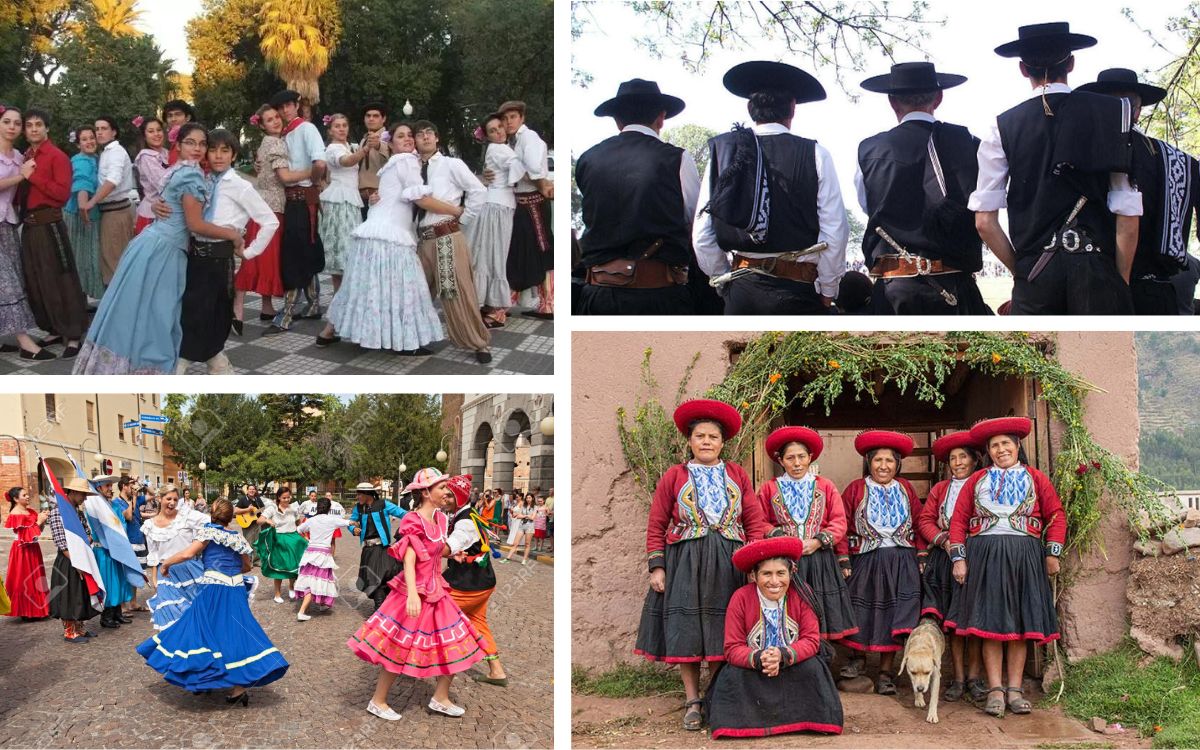Argentina’s culture is a rich blend of Latin American indigenous traditions and European
influences, shaped by centuries of history. While Spain was the first European power to
establish dominance in the country, Italian immigration in the 19th and 20th centuries left a
lasting mark on its customs, language, and cuisine. Today, Argentina’s culture reflects a mix of
Spanish, Italian, and indigenous elements.
One of Argentina’s most famous cultural exports is the tango, a passionate and dramatic dance
that originated in Buenos Aires in the late 19th century. It was initially considered
controversial due to its sensual moves but later gained worldwide recognition. Argentina is also
known for its literature, with Jorge Luis Borges pioneering the genre of magical realism
alongside other Latin American writers.
Another key aspect of Argentine culture is its love for food. Asado (barbecue) is a national
tradition, featuring grilled meats cooked over an open flame. Empanadas, mate (a traditional
tea-like beverage), and dulce de leche are also iconic.
Argentina’s history is marked by influential figures like Eva Perón, wife of President Juan
Perón, who became a symbol of social justice and was later immortalized in the Broadway musical
Evita.
From music to cuisine, Argentina’s culture is vibrant and deeply rooted in tradition.

Argentina Clothing
Traditional clothing in Argentina reflects the nation’s history, folklore, and connection to the
land, dance, and music. Various traditional outfits exist, including those linked to Chacarera,
a folk dance from northern Argentina.
One of the most iconic traditional costumes is that of the Gaucho, a skilled horseman who
emerged in the 17th century after Spaniards introduced horses to South America. The gaucho
outfit, worn by both men and women, is a national symbol of pride.
The term "gaucho" dates back to colonial times, with multiple theories about its origin. Some
believe it comes from the Quechua word "huachu", meaning orphan or vagabond, while others
suggest Arabic influences from the word chaouch, referring to a horseman or guard.

Argentina Food
Asado: The way to Argentina’s heart is through its asado, or barbecue, also known as parrillada.
Don't leave the country without spending a leisurely afternoon beside a grill or open fire,
feasting on perfectly grilled meats, often paired with red wine.
Chimichurri: A vibrant green sauce made of finely chopped parsley, oregano, onion, garlic, chili
flakes, olive oil, and vinegar or lemon juice, chimichurri is Argentina’s go-to condiment for
grilled meats.
Provoleta: Argentina takes grilled cheese to another level with provoleta, a dish made from
provolone cheese that is grilled until golden and gooey, often topped with oregano and
chimichurri.
Dulce de leche: Argentina’s grass-fed cows provide not only high-quality beef but also rich
dairy products. Dulce de leche, a thick caramel-like spread made from milk and sugar, is a
beloved sweet treat used in desserts, pastries, and ice cream.

Argentina Art
Painting:
Early 20th Century: Argentina's art scene in the early 20th century was heavily influenced by
European movements like Impressionism and Post-Impressionism, brought over by artists who
studied in France and Italy.
Contemporary Art: Argentina's modern art scene is thriving with diverse expressions.
Artists experiment with various mediums, techniques, and themes, often reflecting the country's
complex social and political landscape. Street art and installations are particularly popular in
cities like Buenos Aires.
Folk Art: Argentina has a rich tradition of folk art, expressed in various forms, including:
Fileteado: A decorative painting style known for its bold colors, intricate floral motifs, and
ornate lettering. Originally used for horse-drawn carts and signage in Buenos Aires, it is now
an important part of Argentina’s cultural identity.

Argentina Film Industry
Argentina boasts a rich and vibrant film industry, considered one of the oldest and most
prominent in Latin America, with a history dating back to the late 19th century. The industry
has experienced periods of growth and decline, often reflecting the country's socio-political
landscape. Here is a glimpse into Argentina's film history:
Early Beginnings and Golden Age (1897-1930s):
The arrival of the first cinematographic equipment in Argentina in 1897 marked the beginning
of its film industry.
The silent film era saw a surge in production, with over 200 films made between 1900 and
1929, though only a few survive today.
Argentina achieved a major milestone in cinematic history by producing the world’s first
feature-length animated film, "El Apóstol," in 1917, directed by Quirino Cristiani.

Argentina Economy
For much of the 19th and 20th centuries, agribusiness and ranching dominated Argentina's
economy. However, today, services and manufacturing are the primary drivers of economic
activity, making Argentina one of the largest economies in Latin America.
Argentina remains the leading grain producer in Latin America and ranks second in cattle
ranching, behind only Brazil. The country’s tourism industry is also among the strongest in the
region, with tourism revenue second only to Mexico. Additionally, Argentina boasts one of the
highest Gross National Products (GNP) and per capita GNP in Latin America, alongside significant
contributions from manufacturing.
The transition from cattle to crop farming began in 1856 with the establishment of the farming
community at Esperanza. Over the following sixty years, Argentina's agriculture shifted toward
crop production, with wheat, corn (maize), and flax becoming major exports.